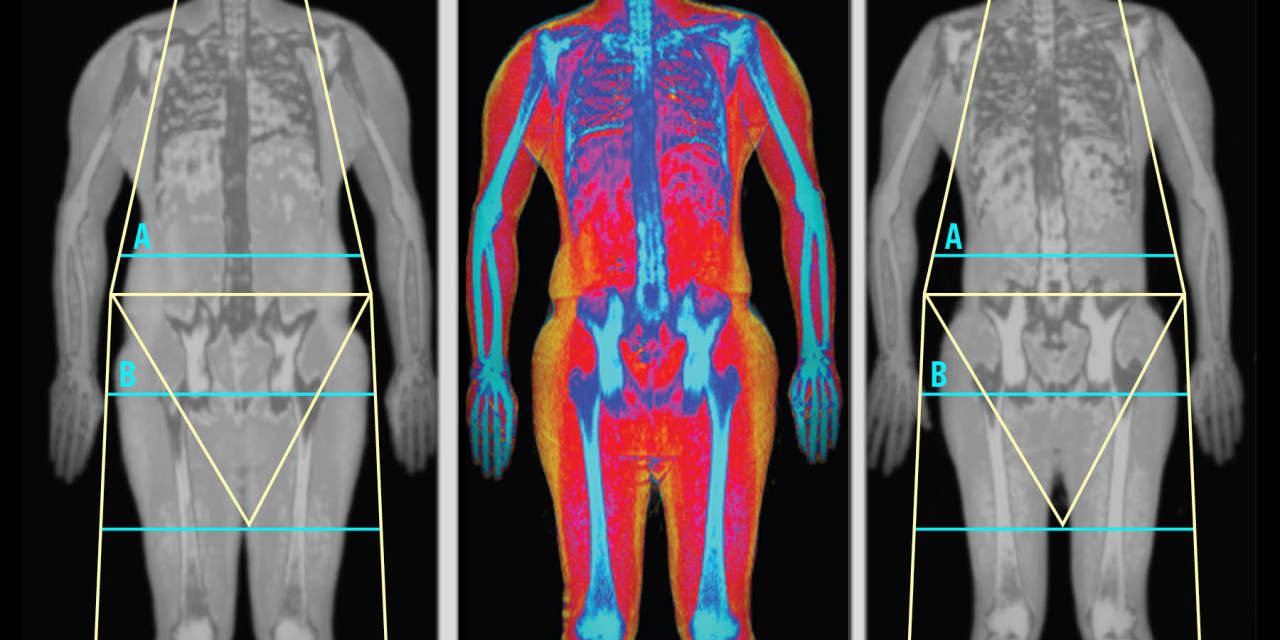Body mass index, or BMI, is one of the most heavily used measurements in modern medicine. It helps determine which people are put on diets, which people qualify for bariatric surgery, and sometimes even which people get priority for vaccines.
There’s a problem. BMI often fails at discerning who is at a healthy weight, many researchers say. Muscular athletes with hardly an extra ounce of fat on their bodies may show up as overweight while seniors who have lost muscle mass—a serious condition called sarcopenia—may register as having the ideal body weight.
If you use this BMI calculator, you will find that basketball player LeBron James, who is listed at 6 feet 9 inches tall and 250 pounds, has a BMI of 26.8, which puts him in the overweight category. That, of course, is ridiculous for a lean and muscular athlete.
BMI is calculated in a formula where the only two inputs are height and weight. If you are above certain weights for your height, BMI will indicate that you are overweight, obese, or even morbidly obese. It can’t tell you how the weight is distributed or what percentage is fat and what percentage is muscle.
Should you ignore your BMI? No, says cardiologist Francisco Lopez-Jimenez of the Mayo Clinic, who has studied various fat measurements. If you have a BMI over 30—the cutoff point for being classified as obese—you are almost surely carrying unhealthy levels of fat, he says.
But you should know the issues with BMI. For example, a skinny person who gains weight might be carrying unhealthy fat but still have a normal BMI, Lopez-Jimenez says. “The main problem is when BMI is normal and it doesn’t capture the amount of fat or the distribution of fat,” he says.
Not all fat is equally worrisome. Most problematic is visceral fat, which surrounds the internal organs and causes unhealthy metabolic changes including high blood pressure, high cholesterol levels, and possibly dementia. You can’t see visceral fat but people who have a lot of belly fat tend to have more of it while people who carry fat mostly in their legs tend to have less of it.
Another criticism of BMI is that it works less well for some groups of people. Because of their smaller body structure, Asian people can have unhealthy levels of fat, including too much visceral fat, when their BMI is normal, research has found.
The good news is that there are better ways of measuring fat than BMI. The most accurate way is a costly full body MRI, Dr. Lopez-Jimenez says. A DEXA scan is less costly and also accurate. Still, neither procedure is likely to supplant BMI as a quick measure for the masses.
There are some simple measurements that add additional data around your BMI score. Dr. Lopez-Jimenez likes the hip-to-waist ratio. Measure your waist about an inch below the rib cage and your hips at the widest place—where you can feel the bulge at the top of the femur bone. Men should have a ratio of 0.9 or less while women should have a ratio of no more than 0.82, he says. If your ratio exceeds these numbers, you have central obesity, meaning too much belly fat. So if a man has 40-inch hips, his waist shouldn’t be larger than 36 inches. If a woman has 40-inch hips, her waist should be no larger than 32.8 inches.
Another way to determine unhealthy fat is to calculate the ratio between your waist and height. If the circumference of your waist is more than half your height—or a ratio of 0.5—you have central obesity, Lopez-Jimenez says. In other words, a 6-foot-tall person should have a waist that is 3 feet (36 inches) or less in circumference.
For now, neither waist-to-hip nor waist-to-height ratios are used by doctors routinely. Dr. Lopez-Jimenez says he thinks that doctors feel awkward about measuring patients. But you can calculate both of these ratios at home easily with a measuring tape.
Both will help in determining whether your BMI is sending the right signal and, more importantly, whether you have too much fat in problematic areas.
Write to Neal Templin at [email protected]
Read the full article here












